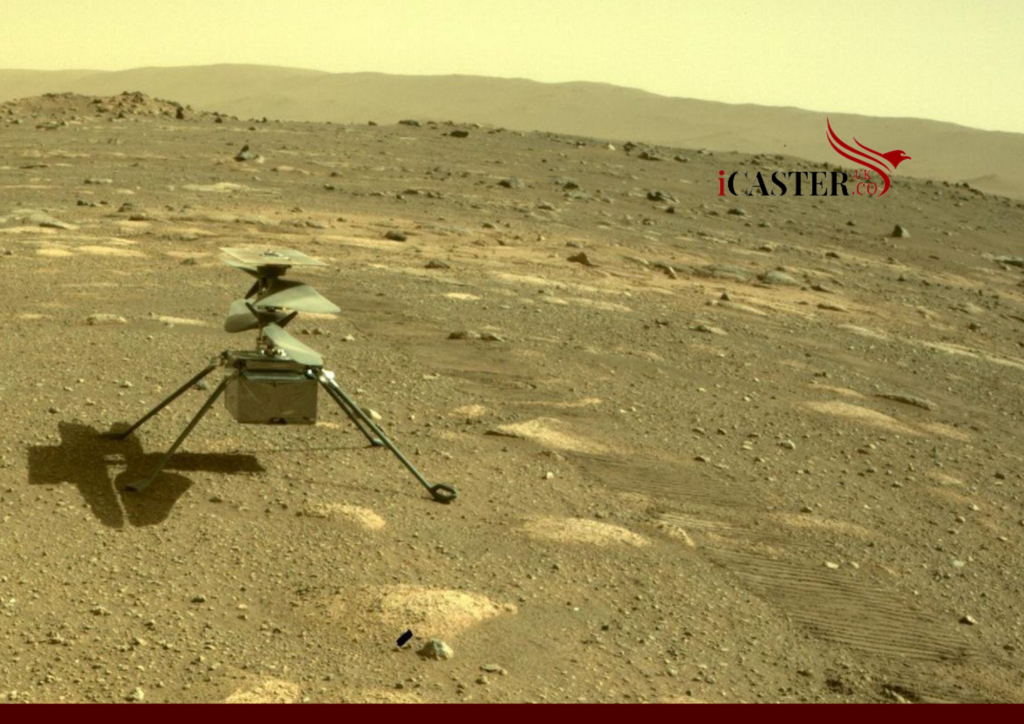Following a turbulent landing, the Ingenuity helicopter has sustained damage and is unable to take flight again. Currently, NASA’s Perseverance rover has identified the grounded extraterrestrial chopper, which now rests alone in a valley on Mars.
The images captured by NASA, skillfully processed and enhanced by geovisual designer Simeon Schmauß, highlight the stark desolation of Mars. This red planet, resembling a desert, has largely lost its insulating atmosphere and is approximately 1,000 times drier than Earth’s driest desert.
Both the Perseverance rover and its former aerial companion, Ingenuity, were tasked with scouring Mars for potential signs of past Martian life. Now, following a recent mishap, the car-sized Perseverance rover will continue its search solo.Ingenuity had already etched its name in history books before its unfortunate accident.
The experimental craft made headlines as the first-ever vehicle to achieve powered, controlled flight on another planet. Its achievements didn’t stop there, as it soared through the Martian skies an impressive 72 times, far surpassing engineers’ initial expectations. Covering distances of up to 2,315 feet, Ingenuity exceeded all anticipated flight capabilities.

However, the thin Martian atmosphere posed a significant challenge. With a volume only about one percent of Earth’s atmosphere, generating enough lift for flight was no easy feat. Ingenuity overcame this obstacle by spinning its four-foot rotor blades at an astonishing rate of 2,400 revolutions per minute.
Unfortunately, a hard landing on January 18 resulted in irreparable damage to Ingenuity’s rotor blades, rendering it incapable of flight. As a result, the once groundbreaking aerial scout now rests among the sand ripples in Neretva Vallis, marking the end of its remarkable journey.
The smooth, sandy landscape proved to be the downfall of Ingenuity. The helicopter relied on software to detect and avoid obstacles such as rocks on the ground. However, NASA clarified that the sandy terrain lacked distinctive features.
“The more uniform the terrain, the more challenging it is for Ingenuity to navigate,” stated the space agency. They believe that the lack of distinctive features in this area likely contributed to the unexpected landing issue.
As time unfolds on Mars, Ingenuity will navigate its surroundings, adapting to whatever challenges come its way. Whether it’s a dust storm or a powerful Martian dust devil, there may be moments where the robot faces obstacles. Yet, its impact is undeniable. Ingenuity has demonstrated that flight on Mars is not just a distant dream—it’s a tangible reality.
This achievement hints at the potential for expansive aerial exploration in Mars‘ future. Who knows? In the years to come, we may witness a Martian aircraft soaring gracefully over the vast desert landscapes of the red planet.